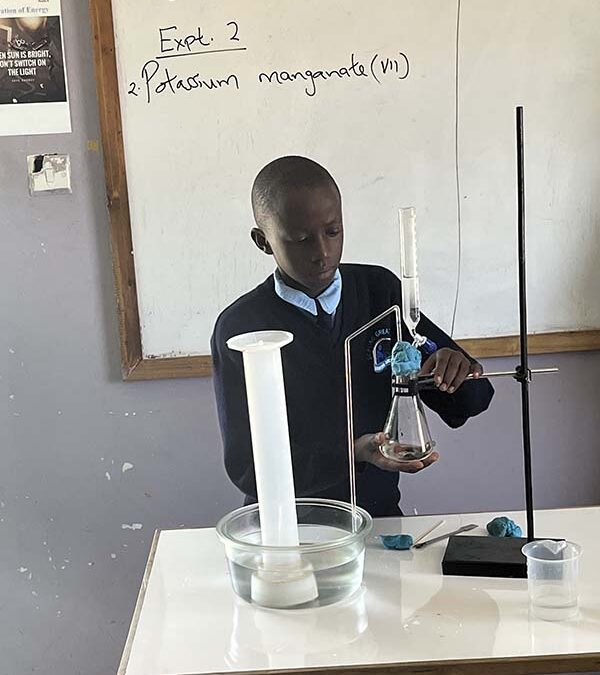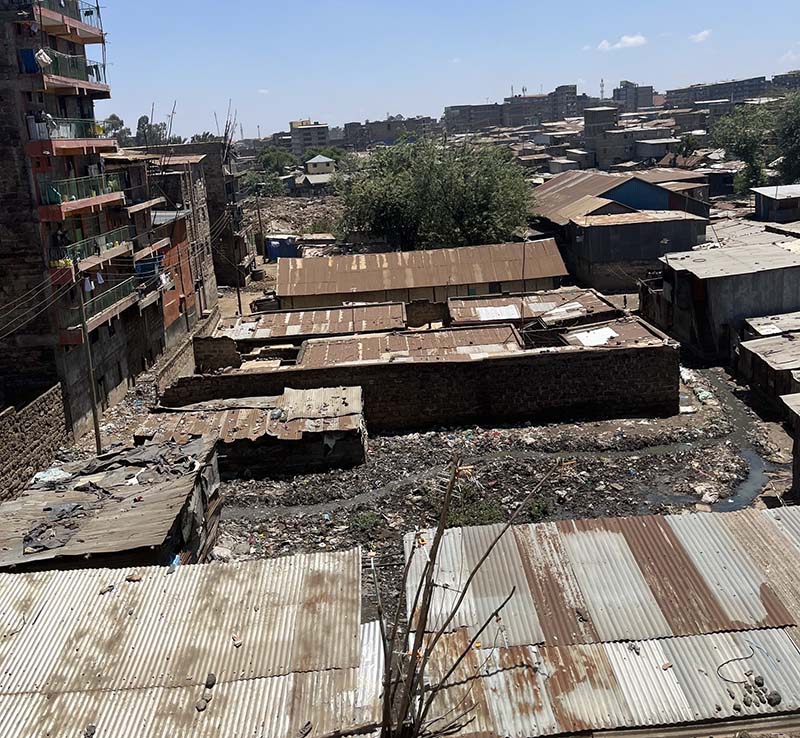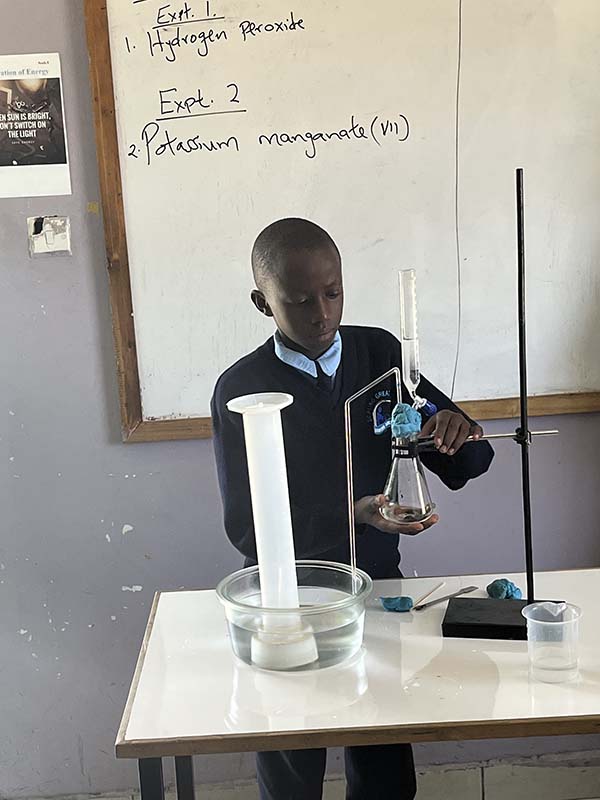Dear KCEF Friends and Partners,
After a very successful week of visiting our schools in February, I wanted to find a way to share with you—friends of KCEF—some idea of the stark contrast between what happens outside the walls of our schools and what happens within them.
For me, two pictures clearly convey that contrast. The first picture was taken out the window of the Mawewa school and shows the Mathare slum where the school is located. In the foreground is a canal filled with garbage and human waste. Behind the canal are the tin shacks where families live without running water or sewer.
The second photo was taken from within the same room at Mawewa. Thanks to a generous KCEF donor, we were able to help the school build and equip a brand new science lab. The young man you see in the photo was taking us through a very clear explanation of an experiment to create oxygen from hydrogen peroxide. Inside that school, the energy and enthusiasm for learning stood in sharp contrast to the struggles and despair just outside its walls.
That same contrast was evident in all of our school visits. The slums of Nairobi remain grim, beset by violent street gangs, drug and alcohol abuse and petty crime. Rampant inflation has made the lives of the city’s poorest residents even more difficult than usual, causing a chain reaction. The parents of our students are mainly casual laborers dealing with inflated food and fuel costs, while scrimping and saving to pay the modest $20-$25 per term our schools charge. Like our families, our schools are also feeling financial pressure as costs for feeding children rise and parents pay school fees more slowly. Moreover, relatively modest teacher salaries are not stretching as far, putting a strain on them and their families too.
Changes to the Kenyan Educational System: How KCEF is working
In the midst of these trying circumstances, the Kenyan government is requiring schools to go through some fundamental changes, including incorporating a brand new curriculum and moving from a grade 1-8 primary school system to a grade 1-6 primary school and grade 7-9 junior secondary school, similar to US elementary and middle school systems. The new government policies required our schools to add science labs on short notice, incorporate new curricula and teaching materials, and hire teachers for grades 7-9 with stronger educational backgrounds than primary teachers typically have.
Thanks to your generous donations, KCEF has been able to support our wonderfully entrepreneurial school leaders through these challenging changes. We continue to subsidize the feeding of a hot breakfast and lunch so that the children have the nourishment they need to learn and don’t skip school. We help pay for individual teacher training as well as for workshops that bring the teaching staffs of our schools together. We also provide a class for soon-to-be graduating students on personal responsibility; a class that includes an outward bound like component as a capstone experience for kids who may never have been outside the city. We help top performing
students with scholarships to the best secondary schools in the country and even support them through university, with a promise from them to go back into their communities and help.
Incredibly, students in our KCEF partner schools are outperforming the national average on a key indicator. In 2023, every 8th grader in Kenya took a national exam to determine their ability to get into various levels of secondary school. The test is a rigorous one on many subjects, and, nationally, only 25% of 8th graders scored higher than 300 points (out of 500). All but one of our schools far surpassed the national averages for that exam, and our two best schools saw 77% and 81% of their students score above 300. Given all the challenges these kids face every day outside the school walls, that is a remarkable accomplishment.
KCEF still has much work to do, and there are many more children in places like Mathare whose lives could be transformed. So I want to thank you for prayerfully considering a generous donation to help us grow our impact.
Sincerely,
Jud Reis
Vice Chair
Kijabe Children’s Education Fund



